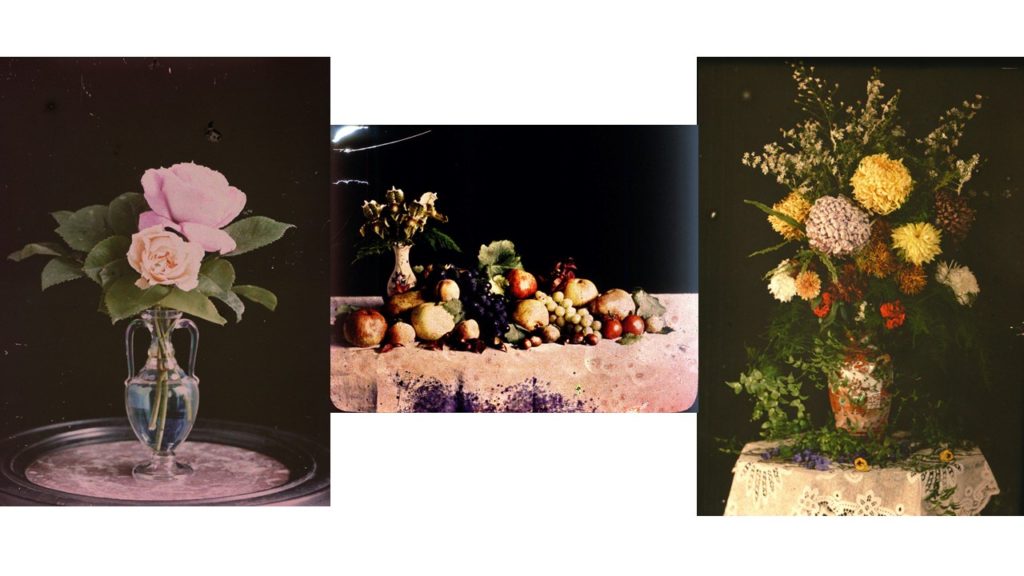What are autochromes?
Autochromes were the first practicable method of colour photography and was invented in France by Auguste and Louis Lumiere. The autochrome process was also known as the autochrome Lumiere- named after the creators themselves was originally a research project into colour photography to the Academie des Sciences in 1904 and the commercial manufacture of autochrome plates began in 1907, which led to the first public demonstration of the invention occurred on the 10th June 1907 in the offices of the French newspaper company ‘L’illustration. Autochromes plates are surrounded in microscopic red, blue and green coloured potato starch grains- approximately four million per square inch. When a photograph is taken, light passes through these colour filters to the photographic emulsion the plate is the process to lead and develop a positive transparency, therefore light passes through the coloured starch grains and leads to a combination to recreate a full colour image of the original subject, producing a coloured image. For autochromes to be taken there was specific apparatus which was required and photographer could also use their own existing cameras; on the other hand it was essential for the photographer to remember to place he autochrome plate in the camera with the plain glass side nearest the lens so the light passed thorough the filter screen before reaching the sensitive emulsion.

EMILE GUITON:
Emile Guiton was beyond influential and was aid to be the most prolific photographer in Jersey at the time who chronicled island life during half of the 20th century. a large percentage of he photography is kept and preserved at the photographic archive of La Societe Jersiaise, in total 781 images of Emile Guiton’s can be viewed. Guiton was born in 1879 in Jersey and from a young age had an interest in history and was a member of La Societe Jeriasise, whom served on its executive committee as joint honorary secretary and was curator of the Museum and editor of the annual Bulletin. Emile Guiton was an amateur photographer and began to develop great skills throughout his life and career. Guiton also experimented with the early stages of colour photography known as ‘autochrome’. His main subject which he used was the recording of archaeological excavations, as he was one of the few members in Jersey who were permitted to take photographs during the occupation in 1940-1945. His research and photography really helped him develop a true understanding of the significance of taking photographs and the historical and social resources they hold. Tragically Emile Guiton died in 1972 and donated many of his imaged to the Societe Jersiaise.

